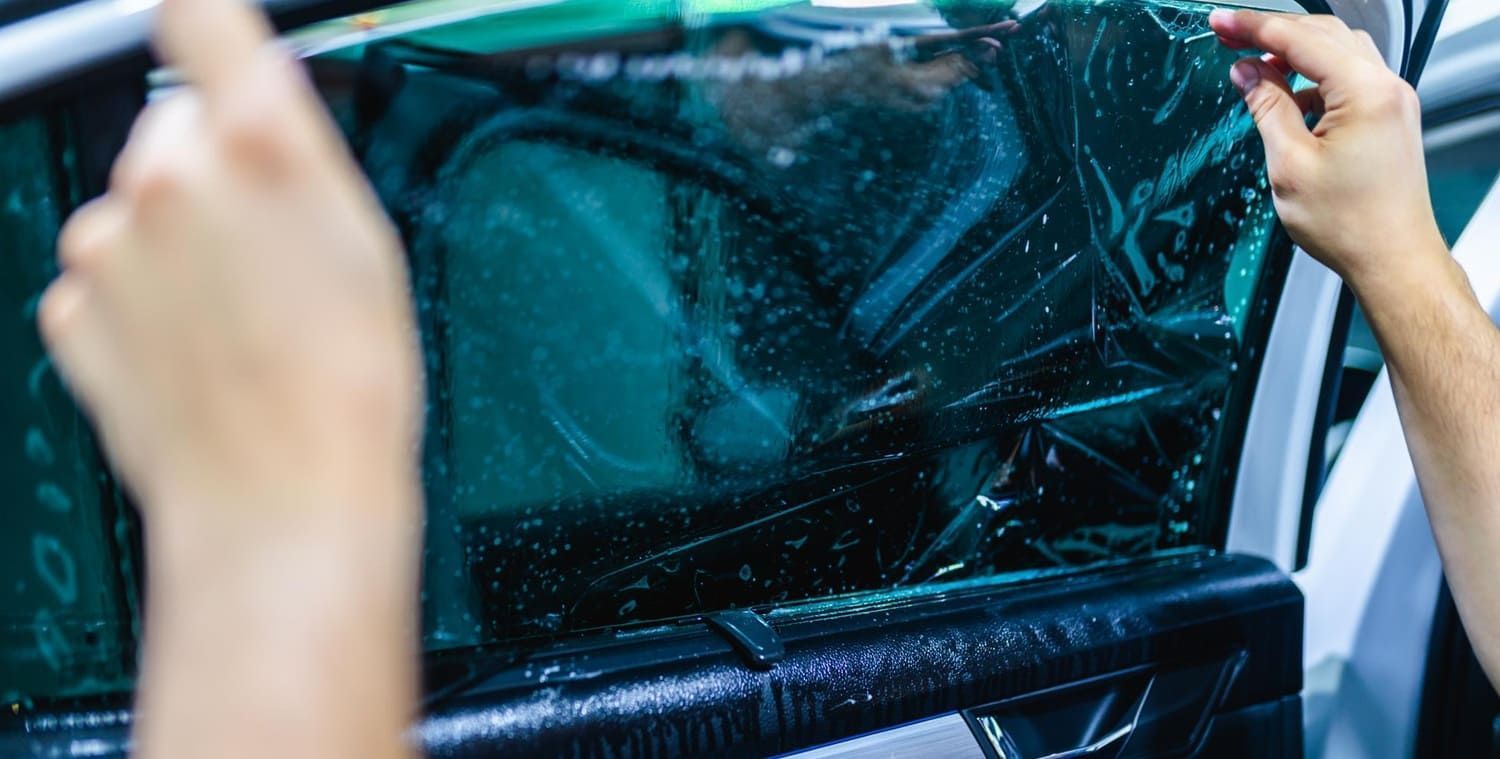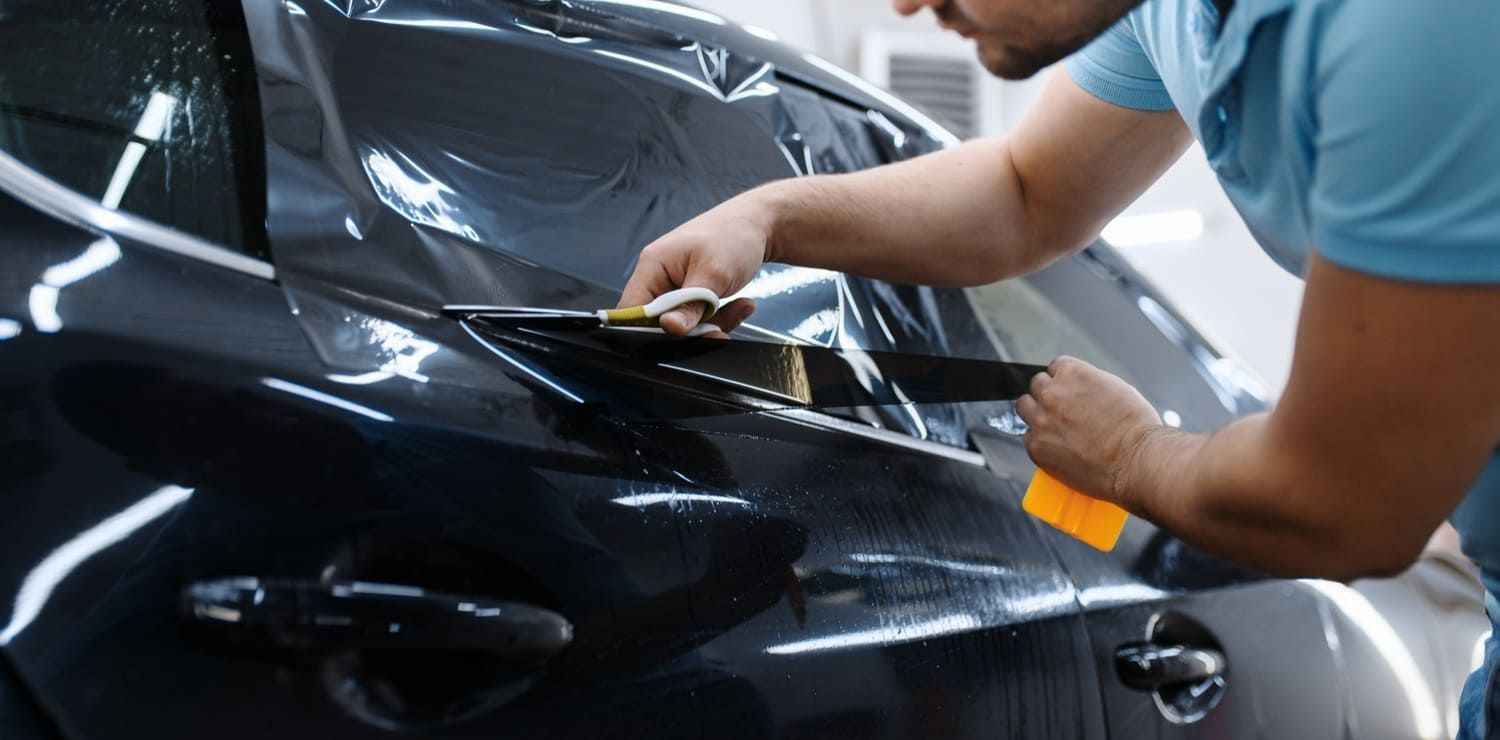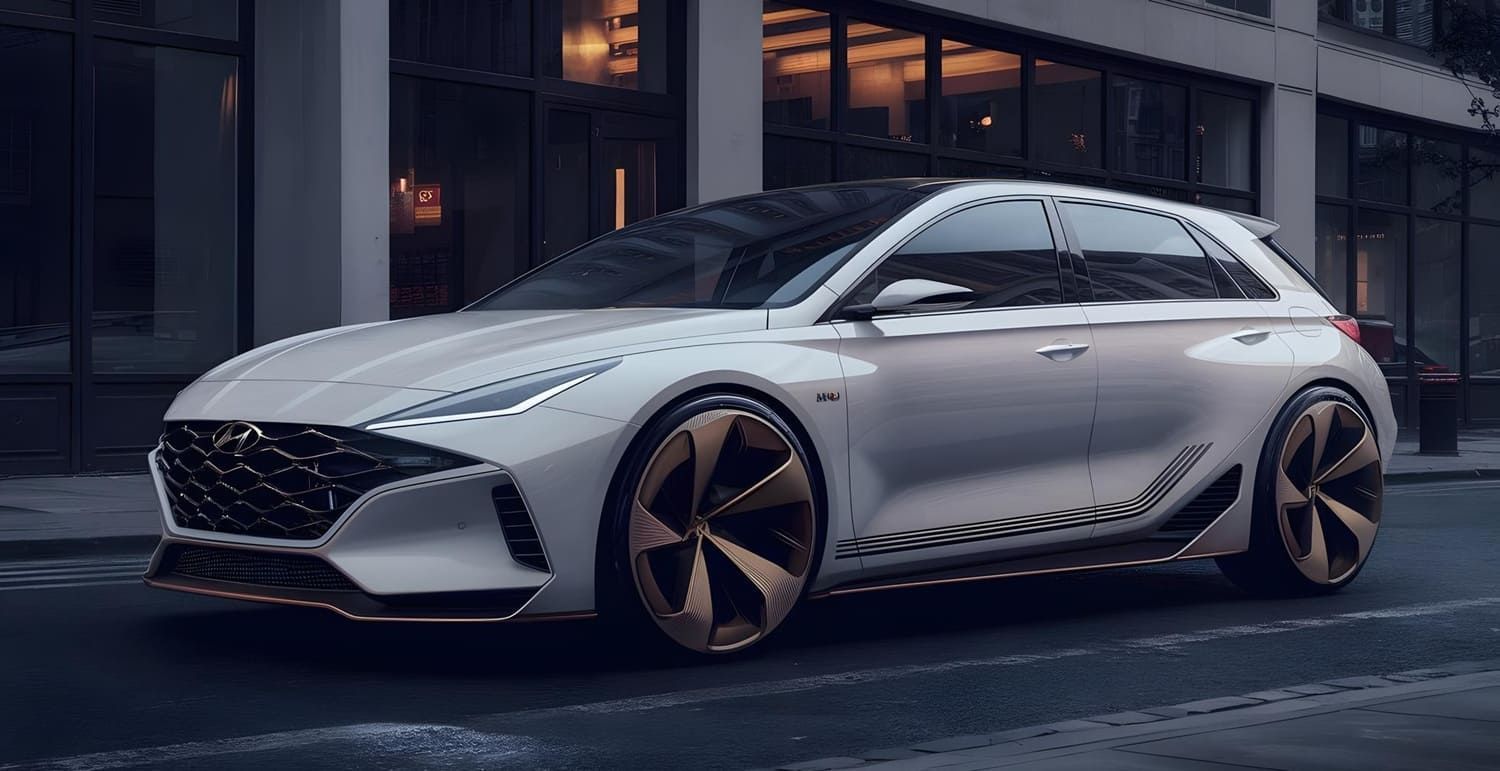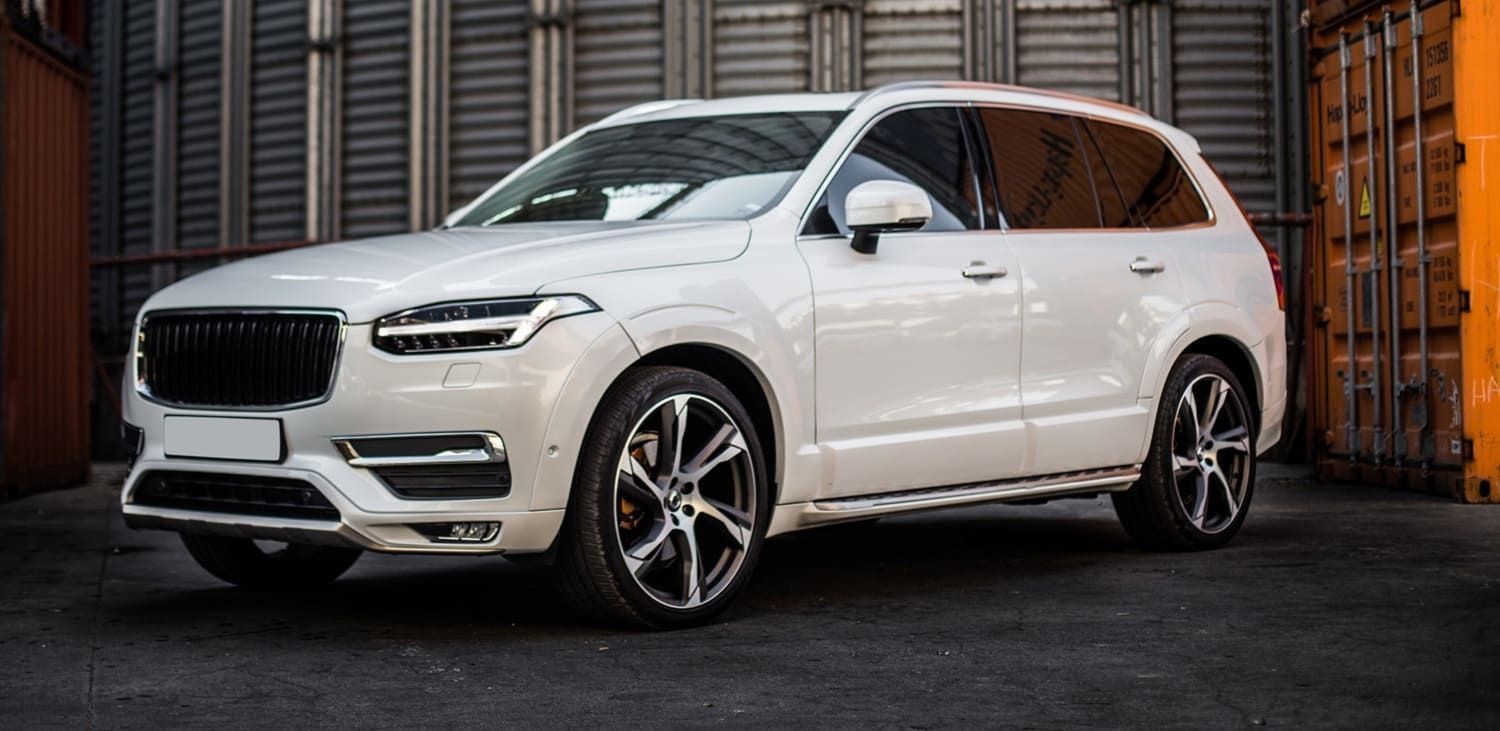How Car Tinting Helps Beat the Summer Heat
When summer arrives, so does the relentless heat, making car rides uncomfortable and, at times, unbearable. The scorching sun not only raises the temperature inside the car but also contributes to faster wear and tear of the interior. One effective way to combat this heat and enhance your driving experience is through car tinting . In this article, we'll explore how car tinting can help you keep cool, protect your vehicle, and even add a touch of style. By understanding the mechanics and benefits of car tinting, you can make an informed decision to enhance your vehicle's comfort and longevity.
Car tinting involves applying a thin film to the interior of a car's windows. This film comes in various shades and materials, designed to reduce the amount of heat and glare entering the vehicle. It's not just about aesthetics; it's a practical solution to several summer-related issues. Additionally, car tinting can enhance the overall look of your vehicle, giving it a sleek and modern appearance that stands out on the road. The process of selecting and applying the right tint requires consideration of several factors, including the climate you live in and your personal preferences for privacy and appearance.

Why Tinting Matters
Car tinting is more than just a fashion statement. It serves several essential purposes that contribute to a more comfortable and secure driving experience:
- Temperature Control: Tinting reduces the amount of heat that enters your car, making it cooler and more comfortable during hot summer months. This reduction in temperature can significantly improve the driving experience, especially during long journeys.
- UV Protection: It blocks harmful UV rays, protecting both your skin and the car's interior. Over time, UV exposure can lead to skin damage and fading of your car's upholstery, dashboards, and other materials.
- Glare Reduction: Tinting reduces glare from the sun and headlights, improving driving safety. This is particularly beneficial during sunrise and sunset when the sun's position can create hazardous driving conditions.
- Enhanced Privacy: Tinted windows provide an extra level of privacy and security. They obscure the view into your car, protecting your belongings from prying eyes and deterring potential theft.
How Does Car Tinting Work?
Car window tinting works by blocking certain wavelengths of light. The tint film consists of multiple layers, each designed to filter out different parts of the light spectrum. This sophisticated layering is what enables the film to provide such comprehensive protection against heat, UV rays, and glare. Here's how it helps:Heat Reduction
The most immediate benefit of car tinting is its ability to reduce heat inside the vehicle. By blocking a significant portion of solar energy, the interior temperature of your car can be drastically lowered, which is especially beneficial during the scorching summer months. This not only makes the car more comfortable but also reduces the need for air conditioning, saving fuel. Lowering the reliance on air conditioning also contributes to reducing your vehicle's carbon footprint, making car tinting an environmentally friendly choice.UV Ray Blocking
Prolonged exposure to UV rays can damage your skin and fade your car's interior. Quality window tint can block up to 99% of harmful UV rays, safeguarding your health and preserving your vehicle's interior materials like upholstery and dashboards. This protection is crucial for maintaining the aesthetic appeal and structural integrity of your car's interior over time. Moreover, by blocking UV rays, tinting can help prevent the development of skin conditions linked to prolonged sun exposure, adding an extra layer of health security for frequent drivers.Glare Reduction
Sun glare can be blinding and hazardous while driving. Window tinting reduces glare, providing a clearer and more comfortable view, which is crucial for safe driving, especially in bright sunlight or during night-time driving. By minimizing glare, drivers can maintain better focus on the road, reducing the risk of accidents. Additionally, the reduction in eye strain from decreased glare can lead to a more pleasant and less tiring driving experience, particularly on long trips or in traffic.Types of Car Tinting Films
There are several types of car window tint films available, each with its own benefits. Understanding these options allows you to choose the film that best meets your needs and preferences, balancing cost, appearance, and performance.
Dyed Window Film
This is the most cost-effective option. It uses a dye to block sunlight. While it provides a darker appearance, it may not be as effective in blocking heat as other types. However, dyed films are popular for those who are looking to enhance privacy and aesthetics without a significant investment. They are also easy to replace or remove if needed, making them a flexible choice for those who may want to change the look of their vehicle over time.Metalized Film
This type contains metallic particles that reflect heat and UV rays. It is more effective at reducing heat and glare but can interfere with electronic devices. Metalized films offer a shiny finish that some drivers prefer for its modern look. Despite its effectiveness, it's important to consider potential interference with GPS and mobile devices, which might be a critical factor depending on your reliance on such technologies.Carbon Tint Film
Carbon tint doesn't contain metal, so it won't interfere with electronics. It offers excellent UV protection and heat reduction, providing a matte finish that adds a touch of class to your vehicle. Carbon films are durable and fade-resistant, ensuring they maintain their appearance over time. This type of tint is ideal for those who prioritize performance and aesthetics without the drawbacks of metal interference, making it a popular choice among discerning drivers.Ceramic Film
Ceramic film is the highest-quality option available. It offers superior heat reduction, UV protection, and glare reduction without the drawbacks of metalized film. Though it is more expensive, its performance and durability make it worth the investment. Ceramic films are known for their clarity and non-reflective finish, providing an unobtrusive view while maximizing protection. This makes them a preferred option for those seeking the best in both function and form, willing to invest in long-term benefits.
Finding Car Window Tinting Near Me
When considering car tinting, it's crucial to choose a reputable service provider. Searching for "car window tinting near me" can yield numerous options, but here are some tips to ensure you make the right choice. Taking the time to select a skilled provider can make all the difference in the quality and longevity of your car tinting.Check Reviews and Reputation
Look for reviews and ratings of local tinting services. A company with consistently positive feedback is likely to provide quality service. Reading customer testimonials can give you insight into the company's customer service, attention to detail, and overall satisfaction. It's also beneficial to seek recommendations from friends or family who have had successful tinting experiences.Experience and Expertise
Choose a provider with extensive experience in car tinting. Experienced technicians will ensure a professional installation without bubbles or imperfections. A skilled installer can also offer valuable advice on selecting the right type of tint for your vehicle and needs. Additionally, an experienced provider is likely to be up-to-date with the latest tinting technologies and techniques, ensuring a modern and effective solution.Warranty and After-Sales Service
A reliable tinting service should offer a warranty on their work. This not only shows confidence in their product but also provides peace of mind for you. A good warranty covers potential issues such as peeling or bubbling, ensuring that you are protected against defects in installation or materials. After-sales service, such as maintenance advice or troubleshooting support, can further enhance your satisfaction and ensure your tint remains in top condition.
Legal Considerations
It's important to be aware of the legal restrictions regarding window tinting in your area. Different states and countries have varying laws on how dark or reflective your tint can be. Ensure that your chosen tint complies with local regulations to avoid fines or complications. Familiarizing yourself with these laws can prevent unnecessary legal hassles and ensure your tinting is both effective and compliant.
Conclusion
At Tints & Beyond , the best window tinting installers near you serving Cape Coral, FL , we provide expert car window tinting solutions designed to help you beat the intense Florida heat. Car tinting offers a range of valuable benefits including heat reduction, UV protection, glare control, and enhanced privacy—all while improving your vehicle’s appearance.
With a variety of tinting films available, you can select a style and performance level that suits your specific needs. Just as important as the film you choose is the installer you trust—professional installation and knowledge of
local tint laws ensure your tint delivers long-lasting satisfaction and legal compliance.
Contact Tints & Beyond today for a
free estimate , and invest in a cooler, safer, and more comfortable ride. With our
high-quality tinting services and advanced film technology, you’ll enjoy a better driving experience all summer long—and beyond.
FAQs About How Car Tinting Keeps Your Vehicle Cool in Summer
How does car window tint help reduce interior heat in summer?
High-quality window tint blocks a significant portion of solar heat and infrared radiation, keeping the cabin cooler by up to 60% on hot days.
What type of tint is best for summer heat protection?
Ceramic and infrared-blocking window films offer the best performance for heat rejection without sacrificing visibility or signal clarity.
Does tinting reduce the need for air conditioning?
Yes. Since tint helps maintain a lower cabin temperature, your AC system doesn’t have to work as hard, improving energy efficiency and fuel economy.
Is dark tint better at blocking heat?
Not always. Some light ceramic films outperform dark dyed tints in heat rejection thanks to their advanced infrared filtering technology.
Will tinting all windows maximize heat protection?
Yes. Applying tint to all side and rear windows—and even the windshield with a legal clear film—offers the best thermal insulation.
How much cooler can tinted windows make your car?
Depending on the film type, interior temps can be 15–25°F cooler, especially during peak summer heat.
Does tint block UV rays as well as heat?
Yes. Most premium films block over 99% of harmful UV rays, which not only cools the interior but also protects your skin and interior surfaces.
Can tinting help if I park outdoors often?
Definitely. Tint acts as a barrier against direct sun exposure, making a huge difference for vehicles parked in uncovered areas.
Is car tinting still helpful in mild summer climates?
Yes. Even in cooler regions, tinting reduces glare and ambient heat, improving driving comfort and reducing sun exposure year-round.
What’s the best tint percentage for heat reduction?
20%–35% VLT is commonly chosen for balancing privacy, visibility, and heat rejection—though lighter ceramic films also work well.
Can I still benefit from tint if I have factory privacy glass?
Yes. Factory tint doesn’t block much heat. Adding a ceramic or IR film over it enhances UV and infrared protection without changing the look too much.
Does tint fade or lose heat-blocking ability over time?
Not premium tints. High-quality ceramic and carbon films are color-stable and retain their performance for 10+ years with proper care.
Will tinting the windshield help with heat control?
Yes—when done legally using a clear ceramic film, it significantly reduces sun glare and interior heating without compromising visibility.
Is car tinting safe for electric vehicles in hot climates?
Yes, and it’s especially helpful. By reducing cabin temperature, tint can help conserve battery power used for air conditioning.
How soon after tinting can I expect to feel a temperature difference?
Immediately. Once installed, you’ll notice the cabin stays cooler even after short periods in the sun.
Can car tint help protect against skin damage while driving?
Yes. UV rays penetrate windows, but quality tint provides skin protection, especially for drivers exposed to long sun exposure on commutes.
Does car tinting help keep the steering wheel and seats cooler?
Yes. Tinted windows block direct sunlight, which can reduce surface temperatures on steering wheels, gear shifts, and upholstery.
Is tinting a good long-term solution for summer comfort?
Absolutely. Unlike sunshades or portable fans, tint is a permanent upgrade that provides passive, year-round cooling benefits.
What’s the best time of year to get your car tinted for summer?
Early spring or late winter is ideal to beat the summer rush, but tint can be installed any time of year with proper curing.













